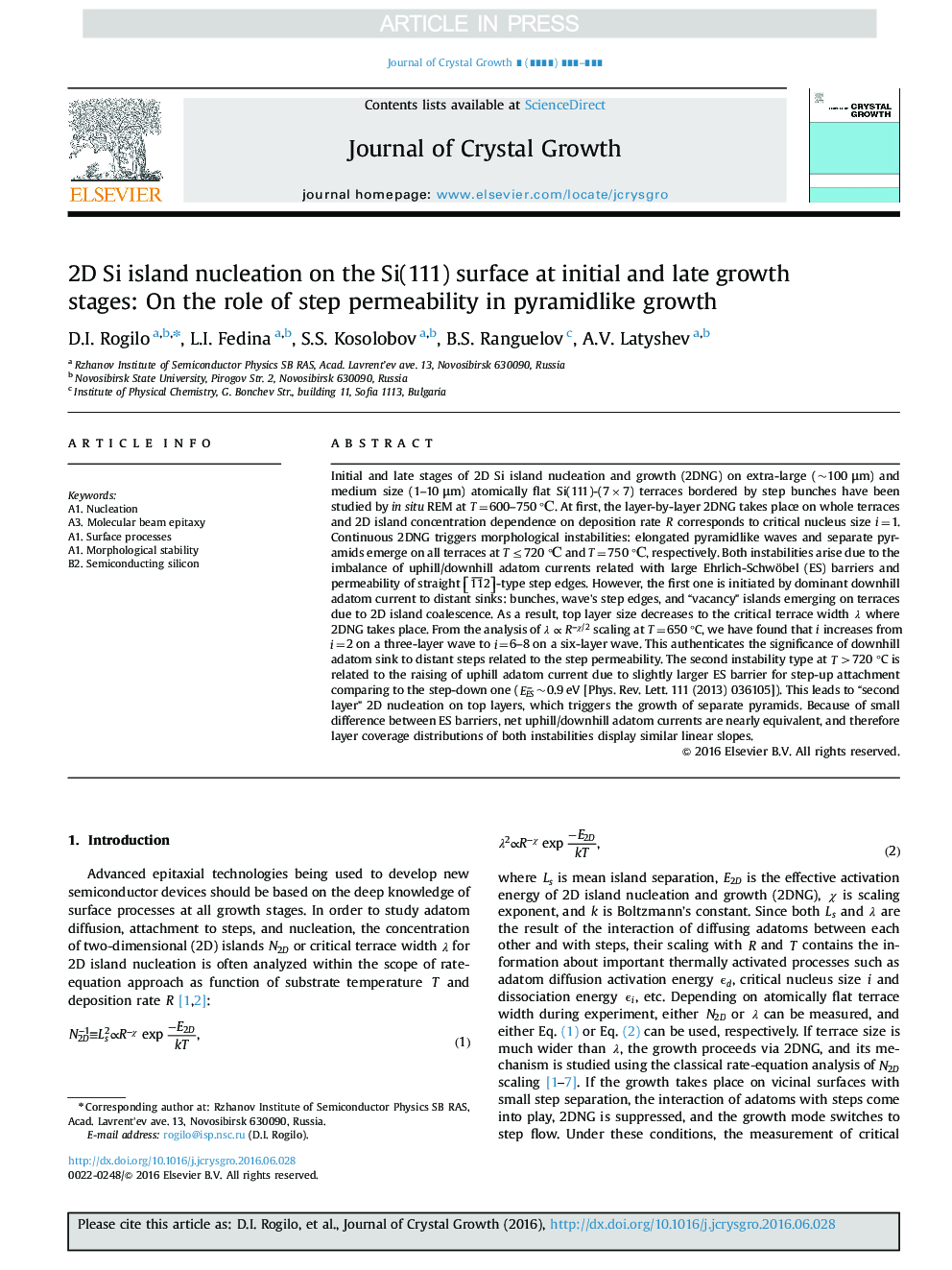| کد مقاله | کد نشریه | سال انتشار | مقاله انگلیسی | نسخه تمام متن |
|---|---|---|---|---|
| 5489729 | 1524372 | 2017 | 8 صفحه PDF | دانلود رایگان |
عنوان انگلیسی مقاله ISI
2D Si island nucleation on the Si(111) surface at initial and late growth stages: On the role of step permeability in pyramidlike growth
دانلود مقاله + سفارش ترجمه
دانلود مقاله ISI انگلیسی
رایگان برای ایرانیان
کلمات کلیدی
موضوعات مرتبط
مهندسی و علوم پایه
فیزیک و نجوم
فیزیک ماده چگال
پیش نمایش صفحه اول مقاله

چکیده انگلیسی
Initial and late stages of 2D Si island nucleation and growth (2DNG) on extra-large (~100 μm) and medium size (1-10 μm) atomically flat Si(111)-(7Ã7) terraces bordered by step bunches have been studied by in situ REM at T=600-750 °С. At first, the layer-by-layer 2DNG takes place on whole terraces and 2D island concentration dependence on deposition rate R corresponds to critical nucleus size i=1. Continuous 2DNG triggers morphological instabilities: elongated pyramidlike waves and separate pyramids emerge on all terraces at Tâ¤720 °С and T=750 °С, respectively. Both instabilities arise due to the imbalance of uphill/downhill adatom currents related with large Ehrlich-Schwöbel (ES) barriers and permeability of straight [11¯2]-type step edges. However, the first one is initiated by dominant downhill adatom current to distant sinks: bunches, wave's step edges, and “vacancy” islands emerging on terraces due to 2D island coalescence. As a result, top layer size decreases to the critical terrace width λ where 2DNG takes place. From the analysis of λâRâÏ/2 scaling at T=650 °C, we have found that i increases from i=2 on a three-layer wave to i=6-8 on a six-layer wave. This authenticates the significance of downhill adatom sink to distant steps related to the step permeability. The second instability type at T>720 °C is related to the raising of uphill adatom current due to slightly larger ES barrier for step-up attachment comparing to the step-down one (EESâ~0.9 eV [Phys. Rev. Lett. 111 (2013) 036105]). This leads to “second layer” 2D nucleation on top layers, which triggers the growth of separate pyramids. Because of small difference between ES barriers, net uphill/downhill adatom currents are nearly equivalent, and therefore layer coverage distributions of both instabilities display similar linear slopes.
ناشر
Database: Elsevier - ScienceDirect (ساینس دایرکت)
Journal: Journal of Crystal Growth - Volume 457, 1 January 2017, Pages 188-195
Journal: Journal of Crystal Growth - Volume 457, 1 January 2017, Pages 188-195
نویسندگان
D.I. Rogilo, L.I. Fedina, S.S. Kosolobov, B.S. Ranguelov, A.V. Latyshev,